




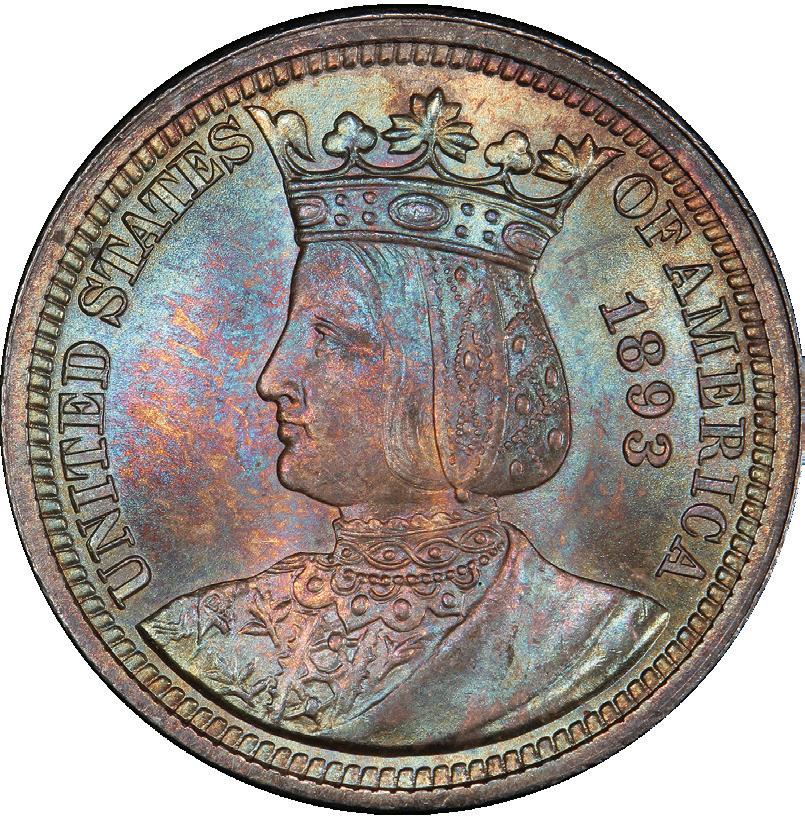





































A
Universe Company
Welcome to 2023! With the arrival of the new year comes the debut of the new PCGS Market Report, a rebranded version of the magazine that has been published since 2007. This new banner reflects our company’s commitment to inclusivity, with the breadth of our expertise and service reaching far beyond the rare coins that represented almost all of our business when PCGS began operations in 1986.
PCGS Market Report is offered as a premium to PCGS Authorized Dealers and PCGS Collectors Club members.
To become a PCGS Authorized Dealer, contact: Dealer@PCGS.com
To become a PCGS Collectors Club member, go to www.PCGS.com/join
Printed in the United States. Copyright 2023 Collectors Universe, Inc. All rights reserved. Reproduction of any kind without written permission of the publisher is prohibited by law. PCGS Market Report is published bimonthly by Collectors Universe, Inc. at P.O. Box 9458, Newport Beach, CA 92658. Postmaster, send address change to Market Report c/o PCGS, Publication Department, P.O. Box 9458, Newport Beach, CA 92658.
Publication of this magazine is not a solicitation by the publisher, editor, or staff to buy or sell the coins listed herein.
Advertising, articles, and other contents of this magazine sometimes contain inadvertent typographical errors, a fact readers should bear in mind when encountering pricing quoted at a fraction of prevailing market values. The publisher is not responsible for actions taken by any person because of such errors. Advertising prices are subject to change without notice.
Think our pricing is too low? Too high? Email us at CoinPrices@Collectors.com with the coin number, description, grade, published price, proposed price, reasoning, and supportive evidence (like auction results). We'll be happy to review it!
For advertising and content inquiries please email us at RCMR@PCGS.com
Rare coins remain a core component of the numismatic items we authenticate, grade, and encapsulate – but they are one part of the hobby that we service. PCGS also grades modern coins, bullion coins, tokens, medals, banknotes, and so much more. We wanted our company’s flagship publication to reflect the incredible diversity of the numismatic items we grade as well as the wide variety of topics we cover among these pages, and therefore the new name debuts with this first edition of the year.
While the name of our magazine changes, the content remains much the same as it has been in recent months, with a kaleidoscopic look at the many wonderful facets of numismatics. Gracing our cover is the extremely rare and desirable 1893 Queen Victoria £5 featuring St. George on horseback slaying a dragon – a classic motif on one of the most beloved British gold coins. This rarity, our PCGS Coin of the Issue, is explored in much greater depth later in the magazine.
Chinese coin expert Peter Anthony offers his trademark blend of whimsy and knowledge with his article covering the works of a famous artist appearing on the coinage of China. We catch up with Tom Koessl, a notable collector who spent four decades building the best set of matte-proof pre-1933 United States gold coinage ever known. And we meet Aarav Dokania, a young collector from India who is becoming one of the hobby’s most enthusiastic champions for the coinage of his nation. You’ll also enjoy articles from our slate of expert columnists and market analysts.
Among the exciting news from PCGS is the unveiling of a new Top 100 Modern Coins list, which Jaime Hernandez reveals in greater detail. Finally, we are thrilled to announce that the top 20 most valuable U.S. coins sold in 2022 were all graded by PCGS! Which coins crossed the block in PCGS holders? We offer a tantalizing photographic showcase of these top 20 coins. Your eyes will be dazzled…
As we begin this new year, we at PCGS want to thank you for all of your support throughout 2022, and we hope that 2023 brings much prosperity and success to you and your numismatic journey. We’re going to be here all along the way and look forward to enjoying all of the great things this new year will surely bring to our hobby.
Sincerely,
Joshua McMorrow-Hernandez Editor-in-Chief, PCGS Market Report

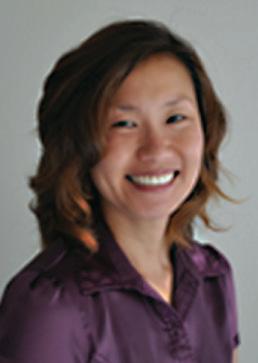

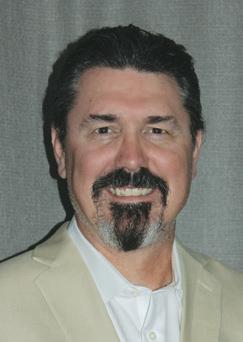




This resplendent 1893 Queen Victoria £5 British gold piece, graded PCGS PR65+DCAM, carries a reverse depiction of St. George slaying a dragon –one of the most iconic motifs in European numismatics.

Seth Chandler of Witter Coin explains the importance of this beloved British rarity.


Joshua McMorrow-Hernandez unveils the new look and feel of the flagship PCGS publication, now known as PCGS Market Report.
Joshua McMorrow-Hernandez provides a look at the top 20 most valuable coins that crossed the auction block in 2022. Which coins are they? Here’s a hint: they’re all graded by PCGS!





Jaime Hernandez reveals how PCGS is determining the newest crop of the Top 100 Modern Coins, comprising a diverse and exciting array of the rarest and most desirable coins from the past several decades.
Sanjay C. Gandhi reveals some of the coins belonging to a fascinating cabinet that includes stunning coins, many more than a century old, from the U.S. Philippines.
Peter Anthony explores the intersection of historic art and Chinese numismatics on a variety of coins from China showcasing some of the works by Xu Beihong.
Meet Aarav Dokania, a 19-year-old collector who digs into the history and significance of coins representing British India.

When Tom Koessl set out to build the best set of matte proof U.S. gold coins, he had little notion that he would single-handedly raise the bar on what it means to build the best set around.

Jon Sullivan introduces a distinctive type of error coin that is absent one or more of its clad layers.


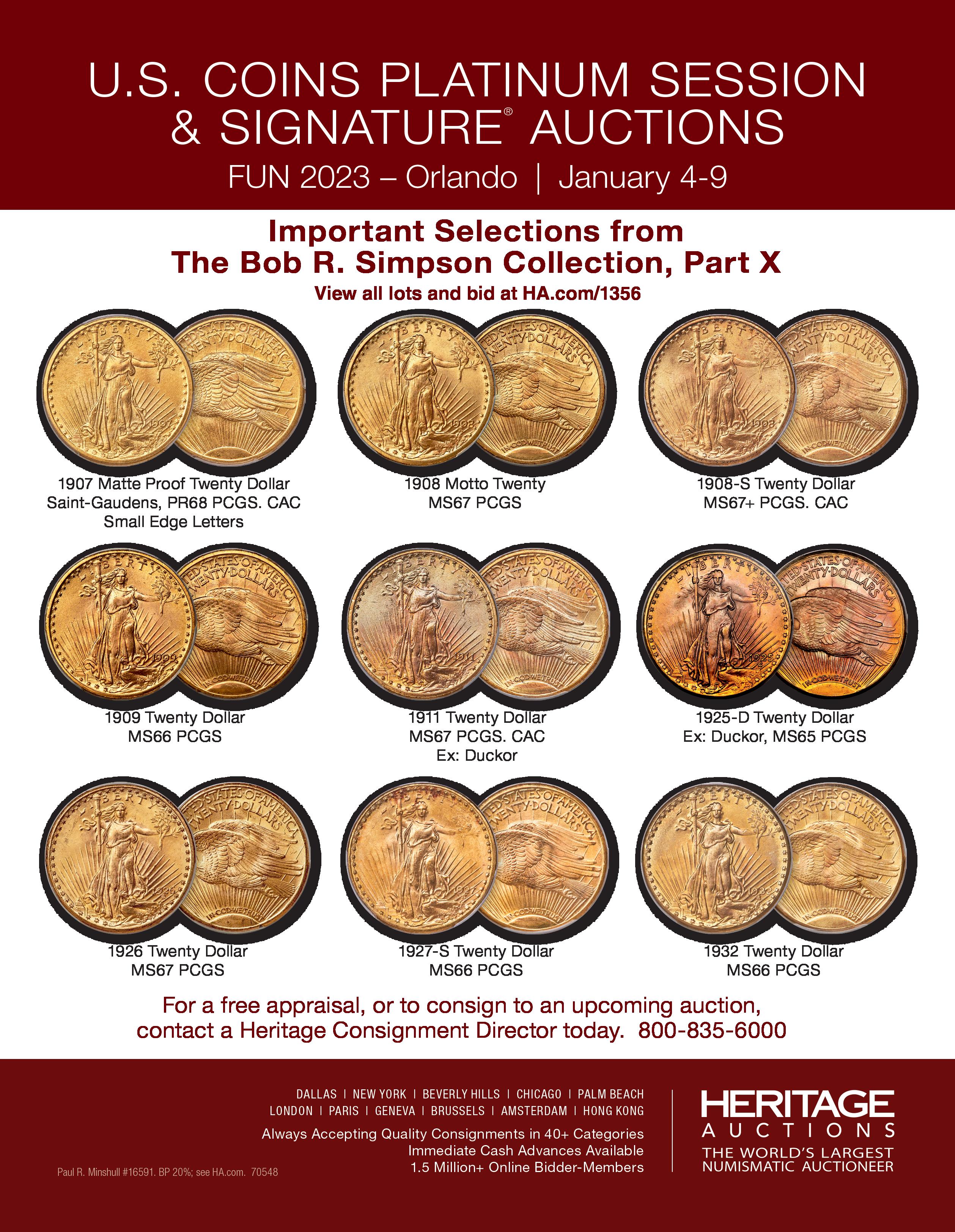


The flagship magazine of Professional Coin Grading Service has evolved over the years to reflect the growth and diversification of the numismatic hobby and the services we provide. Courtesy of PCGS.


At PCGS, we are all about evolving, innovating, and making things better. While we are focused on protecting your numismatic collectibles and helping maximize their value, we do so much more here at PCGS, and we are driven to help educate hobbyists everywhere. Since the PCGS Rare Coin Market Report debuted in 2007, our magazine has served as one of the hobby’s leading publications for the latest market news, comprehensive numismatic analysis, and coverage of the coins and other collectibles our customers enjoy.
Yet, in the more than 15 years since this magazine first hit the streets, our mission at PCGS has grown – and we’ve reached beyond the scope of coins alone – which had been a key component of the magazine’s title and original focus. This issue of PCGS Market Report is the first to carry this banner, a more inclusive and dynamic nameplate that reflects where our company is today and where it’s headed in the future. We built our company on rare coins in 1986, and rare coins will always remain the core of what we do.
However, PCGS has branched out to encapsulating modern coins, common coinage, banknotes, tokens, and medals, as well as all kinds of numismatic curiosities from the United

States and around the world, and it’s important that we now reflect this in the title and among the pages of our flagship publication. Yes, we’ve been covering banknote news, foreign monetary issues, and a diverse array of other numismatic collectibles for some time now. And as our content continues expanding further in the numismatic universe, the time has come for the cover of our magazine to reflect the ever richer array of content contained within its pages.
We look forward to continuing to bring you the very best numismatic content from the hobby’s leading experts. May PCGS Market Report help educate you, inspire you on new and exciting collecting ventures, and serve as your trusted guide for the latest news and information from across our hobby.
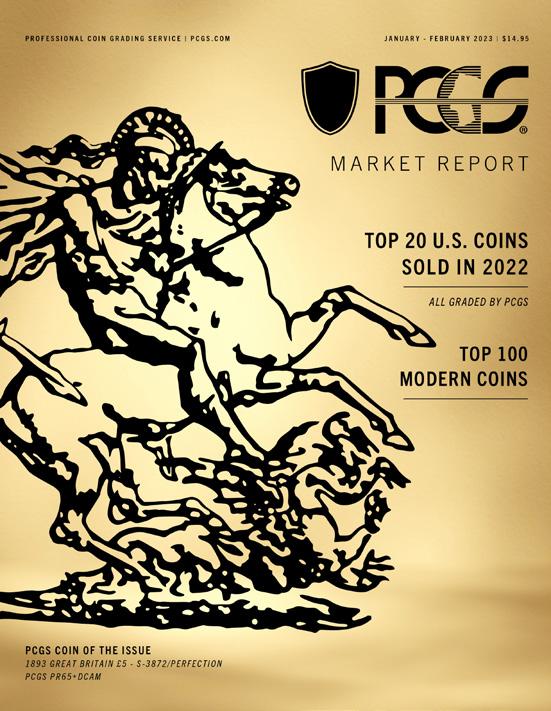


Joshua McMorrow-Hernandez has won multiple awards from the NLG and ANA for his work as a numismatic journalist and editor. He has been a coin collector since 1992 and enjoys all areas of United States coinage and U.S. minting history.

PCGS notched one of its most stellar years on the auction circuit, as all the top 20 most valuable U.S. coins sold in 2022, as of the time of this printing, were graded and encapsulated by PCGS. The coins, more than half of which sold for over $1 million, include some of the rarest coins to cross the auction block. “It’s a true testament to the industry-wide acceptance that the best coins end up in PCGS holders,” said PCGS President Stephanie Sabin. “We are proud to see all 20 of the



most valuable coins to trade hands in public auctions were all in PCGS holders. Auction houses know, just like dealers and collectors around the world, that PCGS holders offer superior security and maximize the value of their coins,” added Sabin. “So, it makes sense that so many of the coins claiming headlining hammer prices are in our holders.”

The list of the top 20 coins sold in 2022 reads like a “Who’s Who” of rare coins and includes the following:

1821
Sold for $4,620,000 by Heritage Auctions on September 29, 2022 Courtesy of PCGS TrueView.



1927-D
Sold for $4,440,000 by Heritage Auctions on August 22, 2022 Courtesy of PCGS TrueView.
1825/4/1
Sold for $4,080,000 by Stack’s Bowers Galleries on August 23, 2022 Courtesy of PCGS TrueView.
1795 Draped Bust Eagle BD-3 9 Leaves, PCGS MS63+
Sold for $3,360,000 by Heritage Auctions on January 13, 2022 Courtesy of PCGS TrueView.





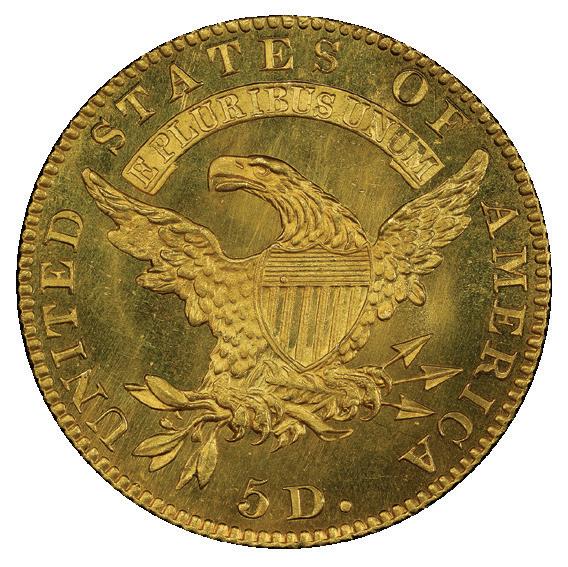

1804 Draped Bust Eagle Plain 4, PCGS PR63
Sold for $2,280,000 by Heritage Auctions on September 29, 2022 Courtesy of PCGS TrueView.

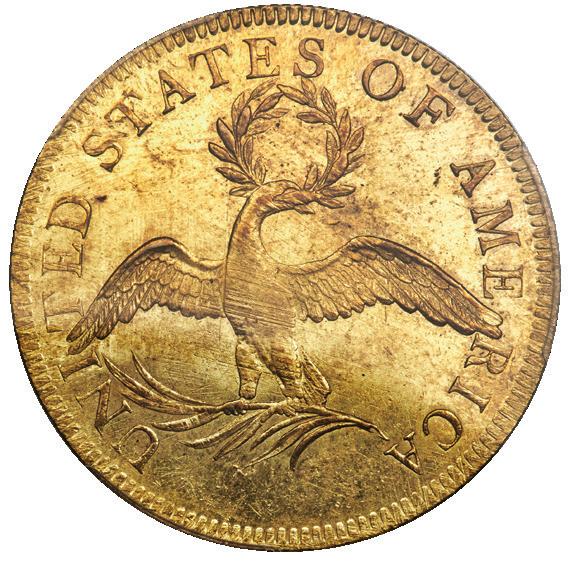
1796


1874

1861






1796 Draped Bust Quarter, PCGS MS66
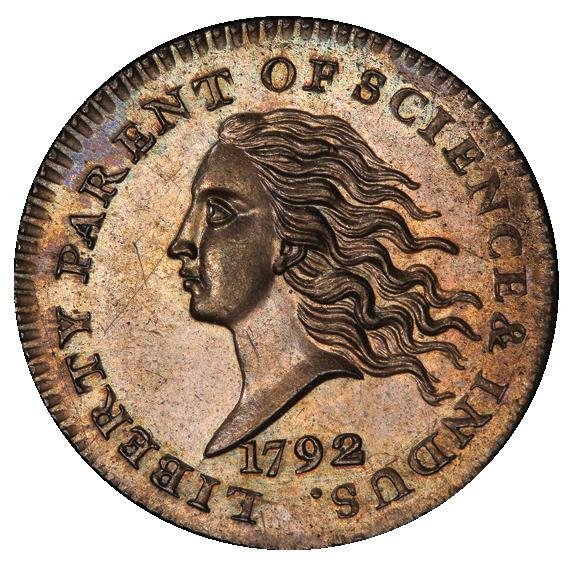
Sold for $1,740,000 by Heritage Auctions on January 13, 2022 Courtesy of PCGS TrueView.



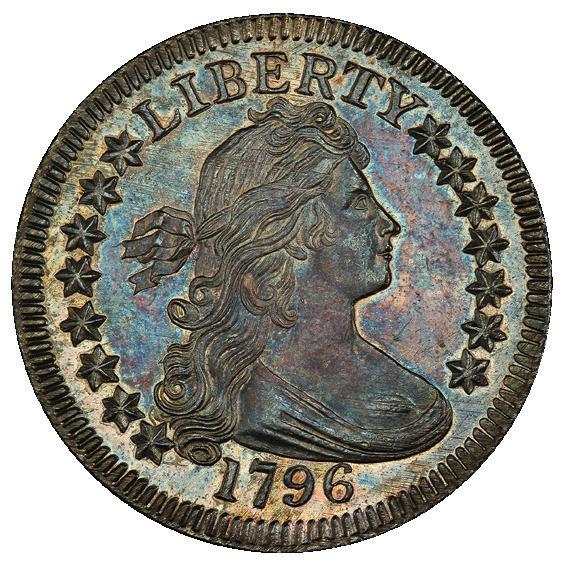
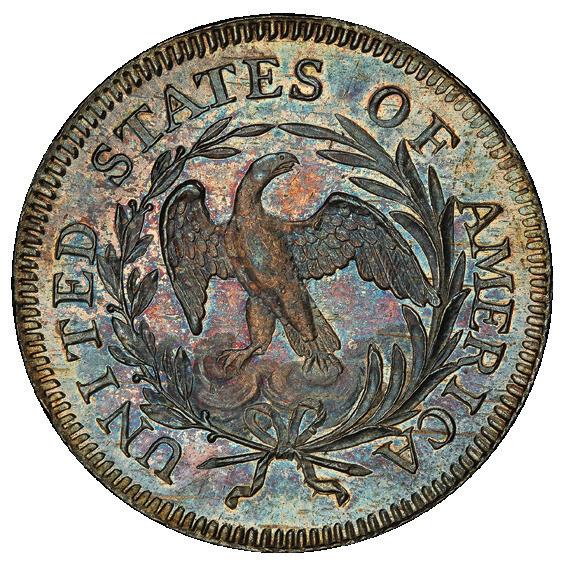


1860 Liberty Head Double Eagle, PCGS PR65+CAM
Sold for $1,200,000 by Heritage Auctions on September 29, 2022 Courtesy of PCGS TrueView.
1792 Disme J-10, PCGS SP64BN
Sold for $1,170,000 by Heritage Auctions on January 14, 2022 Courtesy of PCGS TrueView.

1907
Sold for $1,140,000 by Stack’s Bowers Galleries on April 5, 2022 Courtesy of PCGS TrueView.
1875
Sold for $1,020,000 by Heritage Auctions on October 6, 2022 Courtesy of PCGS TrueView.









1863
Sold for $1,020,000 by Heritage Auctions on May 5, 2022
Courtesy of PCGS TrueView.
1793 Half Cent Cohen 3, PCGS MS66BN
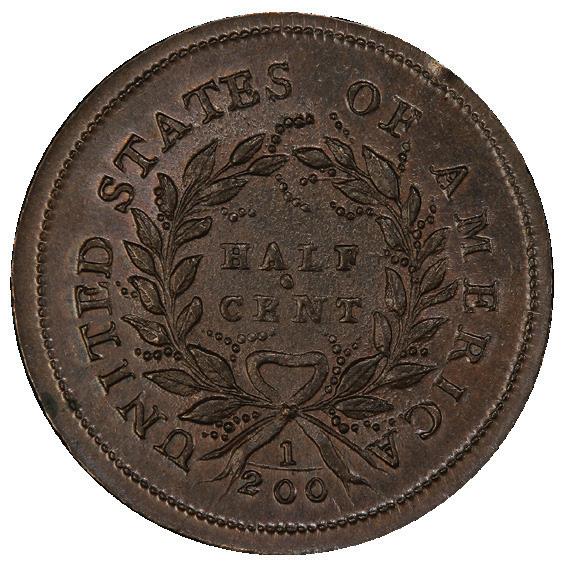
Sold for $1,005,000 by Heritage Auctions on August 22, 2022 Courtesy of PCGS TrueView.







Sold for $990,000 by Stack’s Bowers Galleries on November 9, 2022 Courtesy of PCGS TrueView.
Sold for $960,000 by Stack’s Bowers Galleries on April 5, 2022 Courtesy of PCGS TrueView.

PCGS
MOST
1924-S Saint-Gaudens Double Eagle, PCGS MS67


Sold for $930,000 by Heritage Auctions on August 22, 2022 Courtesy of PCGS TrueView.






1792 Disme J-10, PCGS SP62BN

Sold for $900,000 by Stack’s Bowers Galleries on August 23, 2022 Courtesy of PCGS TrueView.
1876-CC 20 Cent, PCGS MS65
Sold for $870,000 by Heritage Auctions on August 24, 2022






It’s been 10 years since we had the privilege of working on the list of the Top 100 Modern Coins. Before we updated the list, we made guidelines to keep a consistent perspective while adding or excluding coins from the existing group. Some big questions came up, such as what determines which coins we enshrine or remove from the list?
Here are just some of the thoughts that were considered while compiling the list.
What should we consider modern? I had long considered coins dating from the 1970s to present as modern, with issues before that being more vintage. However, this opened up a new discussion and our team realized that, to a 10-year-old, coins from the 1980s and ‘90s could be considered vintage. So, this made us also think about older collectors, which the hobby has many of. If chronological relativity factors into the consideration of vintage versus modern, then many of these collectors may consider coins dating back to the 1950s and ‘60s as modern.
So, the team and I further factored in these considerations and we agreed that 1964 was a pivotal year for United States coins, as that is the last year in which the U.S. Mint produced circulating coins containing 90% silver compositions. We also thought about the rare and prototypical 1964 Special Mint Set coins, which are very significant coins; for us to leave them off this list would be very difficult, as they are quite
we haven’t confirmed a 1964-D Peace Dollar survives, the coin was still struck, and at one point in time, it did exist for certain. So back when we made the original top 100 list a decade ago, we decided to include the coin, mainly to highlight its importance, even though we’ve never seen an authentic 1964-D Peace Dollar.

Another consideration was the coin’s value. Some coins were impactful but weren’t really valuable and are very common. Take the 1970-S Small Date Lincoln Cent. For many years, the coin brought excitement to the hobby, and many collectors were trying to obtain examples of this variety. However, the coin’s buzz dwindled down a bit. The price for a circulated example or pieces in low-end Mint State grades is also nominal – maybe a few dollars. By virtue of that fact, this coin almost didn’t make it into the roundup. Yet, we couldn’t ignore that, for many years, this coin was highly popular among dealers and collectors.


Another consideration was the visual prominence of a specific variety or attribution on the coin. For example, some 1972 Doubled Die Lincoln Cents exhibit very obscured doubling. So, many of these varieties we did not include, as the visual appearance of the variety is just too minor. Meanwhile, other varieties have strong and prominent doubling.
Among our considerations was including coins from different coin series. One of the first drafts of the list had a
disproportionately high number of Lincoln Cents. That was mainly because a lot of prominent varieties were produced in the Lincoln Cent series, while other series hardly had any notable coins or varieties. As a result, we allowed more flexibility favoring the inclusion of other series.
An example is the 1979-P Wide Rim Susan B. Anthony Dollar. This coin hails from a very short-lived series that yielded few major varieties or other rarities. I think most collectors would agree that, for years, the 1979-P Wide Rim was a prominent variety that has since waned in collector prominence as other important varieties have more recently come along. For the Susan B. Anthony Dollar series, we took the more lenient approach and included the 1979-P Wide Rim on the list.

The rarity of a coin also played a major role in which coins were included, but only to some extent. Some coins or varieties can be very rare, where there are only one or very few known specimens. An example is the 1972 Doubled Die Lincoln Cent FS-104 variety, which is very scarce – there are about 40 examples graded at PCGS in all grades combined. The coin commands a strong premium of about $1,000 or more in Mint State grades, but the doubling is not very dramatic. So, this coin was considered because of its rarity, but it didn’t make it on the list, as the doubling is not as prominent as the Type 1 doubled die for the date.
Value also played a major role in more than one way when choosing coins for the list. If an issue or variety had a significant premium, then it might be considered for the list. For example, the 1995-W Proof American Silver Eagle received a large boost in ranking because of its huge premium value. There are other coins scarcer than the 1995-W Proof American Silver Eagle, even within the same series. But for many compelling reasons, the 1995-W Proof American Silver Eagle commands a very strong premium, so this coin enjoyed a boost in rankings due to its higher premium value.

The 1995-W Proof American Silver Eagle is a true modern rarity with a mintage of just 30,125 and outstanding collector demand, making it a key date in the popular silver bullion series. Courtesy of PCGS TrueView.

The metal composition of a coin was another factor we considered. For example, many gold and platinum coins can be scarce, are popular, and many even command strong premiums. But there's more to it than these factors alone. For example, a one-ounce American Gold Eagle can be worth about $2,000 or higher. Yet, if you factor in the gold metal content alone, it has about $1,600 of value just in the metal composition itself. So, for many gold and platinum coins, the bullion price was considered.
Some coins are being heavily promoted, including proof American Gold Eagles. Some major dealers are currently offering several-hundred-dollar premiums over the spot price of gold for many proof American Gold Eagles. This marketing affects a coin's overall demand and value, and these were matters that we also considered.


Mintages played a big role as to which coins were ensconced in the list. Some coins have very low mintages for their series, where they've become scarce or difficult to find. At times, values of the coins didn’t really reflect their low mintages, despite the coins being truly scarce. Take for example, some of the First Spouse gold coins, many of which carry very little numismatic premium over their spot price, but many of
their mintages are counted among the lowest in modern U.S. coinage.
The ranking or listing order of the coins represents no small task. Many, many variables went into consideration. But, overall, sorting involved a combination of different factors, many of which we have already divulged above. Some of the most critical were rarity, value, and survival rate. Another aspect was the coin's historical significance, why or how it was struck, and under what circumstances, etc.
I have to admit, compiling the list has been one of the most exciting projects I’ve ever worked on. With thousands of different modern coins to choose from, how do you drill down to the best 100 coins? And to make it even more challenging, the coins needed to be organized in a way that makes sense, even if it means excluding coins that you really like, while also adding coins that you may not be too excited about.
One thing is for certain: no two individuals will come up with the same exact list, and especially in the same ordering. But we believe most experienced and numismatically knowledgeable individuals would come up with a similar “Top 100 Modern Coins” list, ranking the coins somewhat similarly.
The 1964-D Peace Dollar (seen here in a conceptual PCGS image), 1975 No-S Proof Roosevelt Dime, 1976 No-S Eisenhower Dollar, and 2000-W 22-karat Sacagawea Dollar may be rarities deserving a spot in a list of top modern coins, but they are virtually uncollectible to the masses and thus excluded here. Courtesy of PCGS TrueView.




We hope you enjoyed reading just some of the decisionmaking factors that played a role in compiling the list of the Top 100 Modern Coins. In the coming months, PCGS will have an updated version of the Top 100 Modern Coins, as it’s been 10 years since we first offered the original list, and many new contenders have arrived on the numismatic scene since then.
An additional change we made to the list for 2023 is that we eliminated some of the coins on top of the original list, including the 1975 Proof No S Dime, 1976 Proof No S Ike Dollar, the 2000-W 22-Karat Gold Sacagawea Dollars and a few others because most of these coins are extremely rare, in private collections, and some coins – like the 1964D Peace Dollar – may not actually exist or can’t be legally owned. Therefore, most collectors will never be able to own an example of the aforementioned coins. By eliminating some of these almost-impossible-to-obtain coins from the list, this also enables almost all collectors to complete and compete in this very exciting Top 100 Modern Coins set.

What a great way to start the year 2023 with this revised list of the most important coins of our time. So many collectors can now own some of the greatest modern coins in numismatics and, at the same time, get to share them and compete with others in the PCGS Set Registry under the “Top 100 Modern Coin Set.” At PCGS, we can’t wait to see collectors build their “Top 100 Modern Coin Sets” in the PCGS Set Registry and display them online for the whole world to see.



Jaime Hernandez is an editor for the PCGS Price Guide and has been a proud member of the PCGS team since 2005. By the time he reached his early 20s, Jaime was successfully buying and selling coins with some of the most prominent dealers and collectors in the country. Email: jhernandez@collectors.com











In the 1990 song “Vogue,” Madonna sings, “Grace Kelly, Harlow Jean, picture of a beauty queen, Gene Kelly, Fred Astaire, Ginger Rogers, dance on air, they had style they had grace…” The Maharlika Collection we are featuring will never make it to GQ or Cosmopolitan magazines for its style. However, it displays a few coins that “strike a pose” in our magazine. Currently, this member is participating in 53 sets we offer to build and takes the pole position (number 1) in 44 sets! Numerous examples display grace, many are fully struck up and toned to visual perfection as the coin pictured above. The PCGS Set Registry team is delighted to feature this member's sets and some of their eye-appealing marvels.
The Spanish-American War began on April 21, 1898, and ended on August 13, 1898. It was one of the shortest conflicts in U.S. history, and Spain lost that war. As a result, Spain had to relinquish control of Cuba, Guam, and Puerto Rico. In addition, the United States purchased the Philippines islands from Spain for $20 million when a peace treaty was signed in Paris, France, on December 12, 1898. Coinage for the Philippines was first struck in the United States in 1903 at
both the Philadelphia and San Francisco Mints, respectively. U.S. Philippines mint sets spanning from 1903 through 1912 under the category Territorial & Private Issues have become a favorite among our members. The PCGS Set Registry offers the largest collection of U.S. Philippines mint sets, variety sets, and proof sets for collectors to build.




One set within this collection that we wanted to denote is the Philippines Complete Proof Set (1903-1908). The lowest grade assigned to any coin within this set is PR66 and the highest is PR68+. Complete Philippines sets have been marketed to coin collectors for many years in the hobby. If one were to look for a complete set nowadays that is graded at the PCGS PR65 level or higher, that search may continue for a while or one will have to pay a hefty premium for Gem proof coins. They are simply not readily available. I recall searching for ungraded sets several years ago, and I would be lucky to find a set that graded between PR63 and PR64. Four out of the five dates in this set display unique and remarkable tones of Carolina blue, sunset orange, sun yellow, and many others colors to admire. All five of the peso denominations grade a minimum of PR68, which is an unbelievable numismatic feat itself; two of the pesos grade an astonishing PR68+.
heavyweight Philippines coin champion of the world as the finest example known. This coin is included in the Philippines Complete Set, Proof (1903-1908) set and The Maharalika Collection has had the top spot for the last two years. The most recent record of a PCGS PR68 Peso was Lot 5308 at Heritage Auctions that sold for $20,400 on August 24, 2022. Another coin that stuns the imagination is the 1904 50 Centavos, PCGS MS68, which appears to have snagged virtually every color of the rainbow to show off its eye appeal in pastel extravagance. This masterpiece of toning is another example that has no competitors to challenge its supreme reign at the top and can be found in the set titled The Maharlika Collection Complete Type Set with Mules, Circulation Strikes (1903-1945).
The Maharlika Collection has been participating in the PCGS Set Registry for a number of years now. We can only use our imaginations to wonder how many years in the making this current assemblage of coinage took this member to build. Collectors may be thinking of Madonna’s “Crazy for You” after seeing some of the coins from this member's collection. To view additional selections by this member, please view the set titled The Maharlika Collection United States Philippines, which showcases 30+ showstoppers. A Philippines collection of this caliber may never be assembled again. Then again, anything is possible with time.
One of many gorgeous coins that exists within this collection is the one-and-only 1906 Proof Peso weighing in at 26.95 grams, with no contenders, this “Thrilla Struck for Manila” is graded PCGS PR68+ and ranks as the undisputed



Sanjay Gandhi is a senior content manager at PCGS. His knowledge base consists of a wide variety of world coinage, and he has a great appreciation for toned coins that display vibrant colors. In addition to contributing content to PCGS Market Report, he also assists collectors with the PCGS Set Registry.





 By Peter Anthony
By Peter Anthony
The office tower at 53 Xinjiekou North Street in Beijing is completely unremarkable – if you ignore the big, bronze statue of a handsome man in its courtyard. Dressed in a suit, armed with neither sword nor gun, he carries an artist’s palette in one hand and paintbrushes in the other. Stretched across the building behind him is a bright red banner that greets visitors to the art museum and reads: “‘If you are lucky enough to have lived in Paris as a young man, then wherever you go for the rest of your life, it stays with you.’ Ernest Hemingway.”
Between the wars, artists, writers, the lucky, and the immensely lucky flocked to Paris. It was a time of, “Thousandfranc notes given to an orchestra for playing a single number, hundred-franc notes tossed to a doorman for calling a cab,” as an F. Scott Fitzgerald character reminisced.
The Chinese poet Xu Zhimo visited the city and wrote, “The stream of Paris is truly intoxicating, it captures your heart, captures your will, captures your forelimbs and your entire body; if you’ve never tasted a kiss, how can you ever imagine it?”

One young visitor wrote home, “There are hundreds of Chinese students here, and you bump into them quite
frequently on the streets ... (however) those that are actually studying make up less than one-tenth (of them)!”
Many of the enrolled students came to study art, and only Paris would do. Two Chinese art pupils, sent to the city of Lyon, pleaded with their art professor in a letter that Angie Christine Chau uncovered, “We came to France especially to study European art; would it not be a great loss for us to not be able to study in Paris, the fine arts capital?”
In 1919, a Chinese government scholarship brought a 24-year-old art student to that capital city of art. Raised on a farm by his self-taught artist father, Xu Beihong began to draw and paint animals like chickens, horses, and cats by age six. Isolated in the countryside, the images printed on tobacco cards brought the boy some of his earliest exposures to art.
As happened to them too often, when floods killed the family’s crops father and son would trek together to the city to peddle their paintings. It was a touch-and-go battle with hunger, but the younger Xu was soon recognized as a talent. At 19, he moved to Shanghai where he found patrons who took him in and provided studio space – kindnesses that he never forgot.
By the time Xu arrived in France, he strongly believed that Chinese art was part of his country’s problems. Too reliant on classical sources, it needed to return to the direct study of nature. He dreamed of a Chinese Paintings Revolution. In Paris, he formed a league of overseas Chinese humanities students. The Heavenly Dog Club met to discuss art and politics. As one museum curator put it, “Xu was not the first to formulate the idea, but he was one of the first to offer a solution and a direction.”

Avant-garde art styles like Cubism, Dada, and Surrealism were all the rage in 1920s Paris art circles. While the hipster artists of the day sneered at his work, Xu denounced them as decadent. “Without the ability to represent the appearance there is no way an artist can grasp the essence,” he asserted. It was never his intent to Westernize Chinese painting, but to revitalize it, “to transform the foreign deity into a household goddess.” In France, the patriotism and nationalism he discovered in older French art, like Delacroix’s Liberty Leading the People, inspired him.
Xu’s vision and superb painting skills met with success. One of his oil portraits was included in the 1923 French National Art Exhibition. Four years later, nine of his works were chosen for the 1927 National Exhibition. This recognition led to

The image of a cat on a Xu Beihong painting is the source for this 1995 10 Yuan, 27-gram, .925-fine silver coin. Courtesy of PCGS.

invitations from across Europe to showcase his merger of Chinese and Western art styles.
The Foolish Old Man Removing the Mountain is a good example of monumental Western style blended with Chinese meaning. A fable tells of an old man in Northern China. His view to the south was blocked by two great mountains. He told his family that these needed to be cleared away. As they hauled away rocks a passerby laughed at them. “How silly you all are. There are not enough of you to move these mountains.”
The old man retorted, “When I die, my sons will carry on; when they die, there will be my grandsons and then their sons and grandsons until the task is done.” Mao Zedung used this story as a metaphor for the twin peaks that blocked China’s progress: feudalism and imperialism. He and Zhou Enlai liked Xu’s painting, too. After Japan invaded Manchuria, this painting became a symbol of Chinese perseverance and resistance.
Numismatists can enjoy their own version of this famous artwork. The Foolish Old Man Removing the Mountain design appears on a 2015 Chinese coin struck at the Shanghai Mint. Like the painting, this 50 Yuan proof coin is rectangular.
It measures 80 by 50 millimeters with a metallic content of five ounces of .999 silver. Coin designers Song Fei and Tian Xiaobin also added color to its surface and a gold frame around its edges. The opposite face of the coin displays the national emblem of the People’s Republic of China.

Another 2015 coin design with a traditional theme of Xu Beihong is, The Twin Laughing Deities of Harmony and Unity. Chinese lore has many much-loved fables about eight immortals who represent the rich, the poor, the noble, the humble, the old and young, and male and female. Each has their own iconic symbol, like the water lily and an opened gourd.
One popular tale, The Eight Immortals Crossing the Sea , tells how the group is invited to a faraway party to appreciate peony blooms. On the return journey, the Dragon King of the East Sea rises from the deep and stops them. Only after they reveal their talismans and vanquish the Dragon King can they continue home.
Two immortals appear in Xu’s painting The Twin Laughing Deities of Harmony and Unity. It graces a 10 Yuan proof .999-silver coin designed by Zhang Chenchen of the Nanjing
Mint. The coin weighs in at one ounce, has a 40-millimeter diameter, and 20,000 were produced by the Shanghai Mint.

After his graduation in Paris, the artist returned to China. Perhaps his feelings matched those of another visitor to Paris named Xu, the writer Xu Xu, “Lead me back to my home village, my hometown’s spring scenery so magnificent, full of wild green swaths of rice shoots.”
Back in his own land, Xu Beihong never wavered that Chinese art must be revolutionized through realism. This drew so much opposition that a rival group of Modernist artists, the Juelanshe, or Storm Society, was organized. When Xu learned that many of the entries in a major Shanghai exhibition would be Modernist, he withdrew his own submissions. That turned out to be a shrewd move. A year later it was his work that was being hailed as “the first voice of artistic revival.”
What artists want to do and what comes most naturally to them is not always the same thing. Even as Xu Beihong insisted on a realism-based art reformation of China, he continued to paint in traditional Chinese brush and ink. Ironically, it is these ink paintings that are today his best-known works. Xu’s interpretations of animals, particularly galloping horses painted with astonishing verve, are widely hailed as modern masterpieces.
As a farm boy, he was familiar with these subjects since his earliest childhood. Over time, he perfected a style to portray them. Flowing strokes that capture a horse’s gallop, or a cat as it slinks between trees, became a way to express his thoughts and feelings. A 1938 ink-and-color depiction of a lion and snake symbolizes China’s War of Resistance against Japan. A Chinese battle victory was celebrated by painting an exuberant horse.
Fittingly, the very first pair of Xu Beihong silver coins that China minted in 1995 show a cat and a horse. The opposite side of each coin features the artist’s portrait. Each coin contains 27 grams of .925-fine silver and is 38.8 millimeters in diameter. Mintage was only 8,000 sets of proofs. Zhao Qiang, who later designed many Panda coins, and Zhang Chunye were the coins’ designers at the Shanghai Mint.

That same year the Shanghai Mint struck 2,005 examples of an eight-gram gold coin that shows a strong and noble Xu Beihong lion on it. It is 91.6% fine gold and 23 millimeters round in dimension. Xiang Liming was its designer.
Much rarer is Lao Zi Atop An Ox, a 1995 five-ounce, .999-fine gold rendition of a Xu painting. Only 100 of these 60-millimeter-round coins designed by Ye Bolin were produced. A total of 305 five-ounce .999-silver strikings
of the same design, but 70 millimeters in diameter, were minted as well.

The bronze statue with palette and brushes looks out at the world from near the entrance to the Xu Beihong Memorial Museum. Inside, these words are inscribed in stone, “Xu Beihong was a patriot, closely connected with the fate of his country. His innovative perspective; passion for assisting artistic talent; selfless morals; unwavering dedication to principle and ability to inspire people are all qualities of the Beihong spirit.”
When Xu Beihong passed away in 1953, no one who knew him should have been surprised that his entire artistic estate was left to the people of China. During the earlier war years when Japan occupied parts of China, the artist often traveled around South Asia to put on shows of his own works. All the proceeds from these sales went to help those in need back home.
Within the museum, the art exhibits begin on the second floor. While the most famous paintings in this house of art may be the galloping horses, the first work that comes into view is an immense oil version of The Foolish Old Man Removing the
Mountain. Just as I approach it a little girl, perhaps four years old, runs up, turns, and grins as her mother snaps a photo. I think to myself, “Wouldn’t Xu Beihong also smile to see his legacy carried on by China’s sons and daughters, grandsons, and granddaughters?”
Peter Anthony is a PCGS consultant on modern Chinese coins and is the author of The Gold and Silver Panda Coin Buyer's Guide 3, a two-time Numismatic Literary Guild winner. He is also the publisher of China Pricepedia , a monthly journal and price guide for modern Chinese coinage.









My name is Aarav Dokania, and I'm a 19-year-old numismatist from India. I specialize in British India Coinage from 1835 through 1947. I started collecting coins at the age of eight or nine years old. My late uncle collected coins, and after his passing, his collection was inherited by my elder brother and sister, who also collect coins. This tradition of coin collecting in my home led me to collect coins naturally.
In my early days, I would collect foreign and Indian coins that looked different from the ones in circulation. I was such a pain for all my family and relatives, always asking for coins. I used to believe that the age of a coin determined its rarity. I didn't have much access to the internet and there were fewer resources available online then. Being from a rural part of the country also left me with little chance of fraternizing with any professional numismatist. Over the next few years, I would go on to collect without any knowledge and understanding, but with a passion to learn.
From the age of 12 to 17, my involvement with the hobby nearly came to a standstill because of my years in a boarding school. It was during the pandemic-related lockdown that I had the time to sit down and look through my collection once again, and it was then that I also was able to connect to the numismatic community. It all started when I came across a YouTube video that covered Indian coins, through which I was able to connect to all the groups on Facebook, where much of the hobby community interacts. I started to learn more about the subject and about coin grading, third-party grading, numismatic forums, and auction houses and started to have conversations with dealers and other senior numismatists who were always very kind to answer my questions and were of great help.
It was at this point that I got into British Indian coins, which I found fascinating with a very organized market. I quickly immersed myself fully and got very serious about it and started to give five to eight hours a day to the hobby, including reading books and articles, going through auction records, and evaluating major Indian collections that were auctioned.
I'm currently assembling a complete date-and-mint set of one rupee coins from 1835 to 1947, with the end goal of making it the best set of rupee coins ever assembled. The one

tremendous growth, and demand for quality coins has gone up. While increasing prices is evidence of the strengthening market for British Indian coinage, I still feel this is a greatly underrated area of the hobby.
During the past year, I have gotten into research work on an individual level, going through books and articles of numismatic interests from national archives and many other digital libraries. Alongside all of these, I also deal in coins, which I mostly do through social media. I am also working to launch a website in the coming years with plans of expansion into many other dimensions of the hobby.
As I write this, I have yet to attend my first numismatic exhibition but would hopefully have attended my first show by the time you read this. Over the past two years, I have built great connections, and the community has always welcomed me. Over the next few years, I want to continue to expand my collection, give more to the community, raise awareness about the hobby, write more, and build a platform for numismatic learning.
C entral S tate S
• Convenient Interstate location in upscale Chicago area
• Finest Hotel and Convention Center on the national coin show circuit
• Most secure location for dealer and collector safety
• Expanded Bourse, 500+ Tables, in association with PCGS
• Special sections for Currency, World and Ancient Coins, and budget/economy “Collector Coin Shop Coins.”





• On-Site Grading by PCGS


• Professional security by Positive Protection, Inc.
• Large, diverse auctions by Heritage and Legend Auctions
• PNG Day Wednesday
• Educational programs
Call Hotel Housing Coordinator, Shaina Smith, 847-303-4182 Schaumburg
• Special Exhibit of Major Rarities by top collectors
• Early Bird passes and Pre-Show Registration available online @ www.CSNS.org
• New Management, Dealer and Collector friendly
• Free hotel guest, dealer, and visitor parking
• Several hundred nearby restaurants
• New! Collectors Annex - for budget minded collectors and dealers; discounted tables still available!
• New! 3-Day Live Symposium provided by the Newman Portal
No Sales Tax in
Problems reserving? Thurs 10AM-7PM – Fri 10AM-6PM – Sat 10AM-4PM Dealer Set-Up Wed 3:00 - 7:00PM PUBLIC HOURS
for PCGS Registry & Collectors Club Members FREE ENTRY

 By Kyle Knapp
By Kyle Knapp
The first task for any cataloger or grader is that of proper identification. Unfortunately, experimental phases at the mint do not always make this easy. During the mid-19th century, many new compositions were tested for efficacy and expense as the mint sought to provide consistent alternatives to both the foreign specie that remained prevalent in antebellum circulation and the spate of private currency substitutes unleashed by hoarding during the Civil War. The 1864 pattern cent pictured to the left is Judd-356a, a rendering of the circulating Indian Cent design struck in pure copper. Versions also exist in copper-nickel (Judd-356b) and copper with successive levels of aluminum alloy (Judd-353 to 355). As handling and patination can subtly change the appearance and coloration of the surface, these metallurgical differences are often not visually distinguishable.
Following a proper identification, XRF can be used as an advanced authentication tool by comparing a suspect piece to the known values of a population of previously authenticated or well-pedigreed examples. While published composition data are roughly accurate for most United States issues, idiosyncrasies exist, especially within the rare and oftencounterfeited early American, colonial, and pioneer series. Access to such experimental knowledge is one of the many advantages available to PCGS experts when evaluating the authenticity of a newly discovered specimen.
Can you identify this pattern? It may be difficult from looks alone! Courtesy of PCGS TrueView.
PCGS experts use a variety of technical methods when identifying and authenticating coins. One essential and often revealing examination is X-ray fluorescence spectroscopy (“XRF”), a form of non-destructive elemental analysis providing information about the metallic composition of a coin’s surface. XRF can be thought of as a more refined version of the acid-based assays common in corner coin and jewelry stores, or “test cuts” used since ancient times to verify the purity of precious metal coins. Using an electron beam in place of these harsher methods is one of the great luxuries of numismatics in the modern age and has yielded invaluable information for authenticators and researchers.
XRF technology has also been used to expand our numismatic knowledge. The “New Haven” restrikes of Fugio



Cents from the 1860s can have colorations ranging from dark chocolate to brassy yellow and were largely categorized by appearance alone for many decades. Elemental analysis of a large number of specimens submitted to PCGS over the past several years reveals two distinct groupings: one nearly pure copper, the other alloyed with roughly 8% zinc. The pure copper pieces appear far scarcer than previously thought, suggesting the possibility of a distinct origin.

Other mysteries remain unsolved. The relationship between the two sizes or “denominations” of the St. Patrick New Jersey coinage has long been a point of debate amongst colonial specialists. Colloquially known as farthings and half-pence, their relative weights do not fall into such a convenient ratio, while coloration ranges from dark chocolate to beige. One promising theory resolved this problem by holding that the “farthings” must be debased; experimental data now shows this not to be the case, with several pieces found to be nearly pure copper aside from their splashers. Back to the drawing board!
An avid childhood collector, Kyle first came to Collectors Universe in 2005 as a grading intern while in high school. Now a senior member of the grading and authentication team, some of his favorite coins include the Nova Constellatio coppers, Flowing Hair Dollars, and Flying Eagle Cents.




I know I say this often, but it’s really difficult to choose just three items to highlight in this column because there are so many great coins and banknotes crossing the block. Some particularly notable pieces have gone under the hammer in recent months that deserve to be mentioned here – so many, in fact, that I’m sneaking in a fourth highlight this time and breaking the mold of the usual three pieces that I profile in this segment!
The first coin I would like to highlight is a completely amazing rarity – it’s none other than an 1821 Capped Bust Proof Half Eagle. First of all, there are only two examples known. One of them is in the Smithsonian Institution and the second is seen here and graded PCGS PR65CAM. This example can be pedigreed back to 1885, when the coin resided in the John Colvin Randall Collection. That’s a pedigree dating back to nearly 140 years. This incredible and historically important coin was sold by Heritage Auctions on September 29, 2022, for a staggering price of $4,620,000.

The next coin is also a Capped Bust Proof Half Eagle, but is from 1825. It prominently exhibits a strong 1825/4/1 overdate and is a rare numismatic treasure with only three examples known. This particular specimen is the finest of those and has been graded PCGS PR67CAM. According to the cataloger at Stack’s Bowers Galleries, which sold the coin, this piece was hiding for about 50 years and just recently made its reemergence. When a coin of this caliber comes up at auction, it always brings intense bidding. That was certainly the case for this example, hammering for a record $4,080,000 on August 25, 2022.

This 1886 $20 Silver Certificate is a very significant and scarce note in any condition, but it’s especially rare in uncirculated grades. It is estimated that fewer than 100 banknotes of this issue exist, so finding an example in uncirculated grades is very difficult – not to mention in CU64 condition. In April 2022, Stack’s Bowers Galleries offered an example graded PCGS Choice Unc. 64, which realized an impressive $96,000.
1839
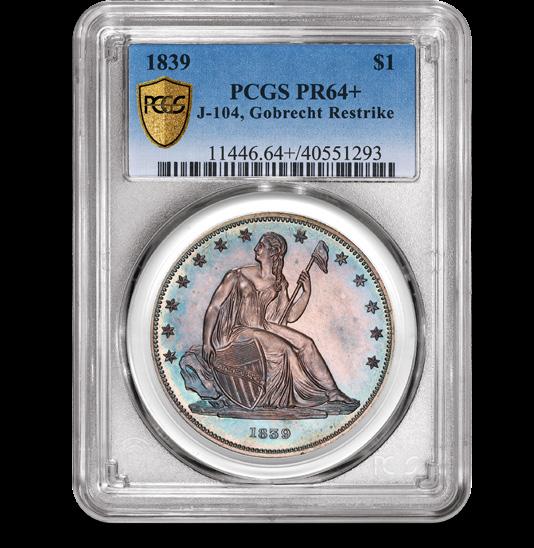

Gobrecht Dollars represent one of the most interesting series to collect, as there are many different variations among these coins – more broadly classified within the overarching Liberty Seated Dollar canon. The design is also considered to be one of the most attractive designs in American coinage, enticing a large collector audience. These coins also attract serious collectors who do some serious bidding for the nicest examples. Such was the case for an 1839 issue graded PCGS PR64+ that was sold by GreatCollections for $67,500 on October 23, 2022.
Jaime Hernandez is an editor for the PCGS Price Guide and has been a proud member of the PCGS team since 2005. By the time he reached his early 20s, Jaime was successfully buying and selling coins with some of the most prominent dealers and collectors in the country. Email: jhernandez@collectors.com













The revolution that began in 1911 brought about the founding of the Republic of China in 1912. This event would have leader Dr. Sun Yat-sen and his vice president, General Li Yuan-Hung, commemorated on undated coinage as memorial coins or “MEMENTO,” as the coins note in English. While silver dollars were struck featuring the two leaders, the intent for a common circulation-issue dollar produced by the republic didn’t occur until 1914, and this piece would feature President Yuan Shih-kai.

In addition to the dollar coinage, a 20 cents coin was issued for circulation by the Nanking Mint. This coin also featured the portrait of Sun Yat-sen. An unadopted pattern coin for the 10 cents coin is a rarely seen and extremely rare piece. The pattern for the 10 cents mimics the design of the Sun Yat-sen dollar, but the die’s engraver, Ho Tze-liang, offered a less-refined engraving than that of the dollar counterpart. The coin also differs with reverse script now saying 10 pieces equal to 1 dollar. While few of these patterns are known, there are multiple types, including a thinner-planchet example and two differing edges – reeded and milled. The 10 cents pattern coins, while struck, were never adopted and released for
regular production, making the surviving examples all very scarce today.
In 2022, an example was submitted to the PCGS office in Hong Kong. This coin was previously encapsulated by an alternative grading service and is a well-known example from the Ultima Collection. This coin joined others from the collection to now be encapsulated by PCGS and is graded SP62, featuring the pedigree of both Ultima Collection and Glorium Collection. The 1912 “Birth of the Republic Series” of coins is listed as number 23 in the Top Chinese Coins by Michael Hans Chou and Sun Han.

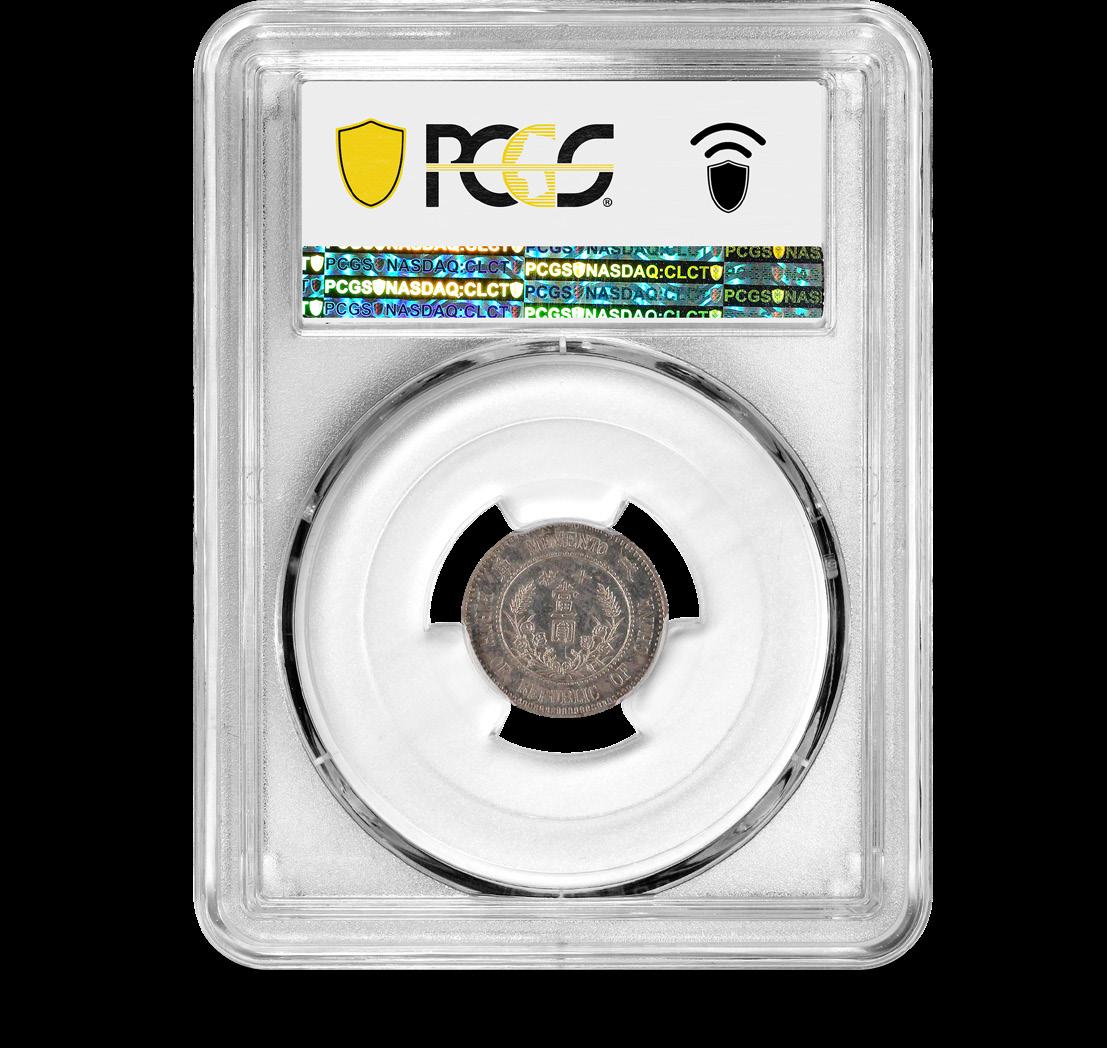
Jay began collecting coins at the age of 13, when he inherited his uncle’s coin collection. Turner is proficient in U.S. and world coins, token and medal variety attribution, grading, and counterfeit detection. In 2017, Turner joined PCGS as a grader specializing in world coins. He is stationed at the PCGS U.S. headquarters and grades on-site for the Shanghai, Hong Kong, and Paris offices.


 By Philip Thomas
By Philip Thomas
In the wide, wild world of numismatics, a banknote’s advanced, historically rich age and/or extremely lofty state of preservation are almost always the determining factors behind its desirability and ultimate value. So it can be refreshing to see an item buck this prevailing trend and be newer, imperfect, and valuable – all at the same time. There are not many modern world banknotes – those made since 1960 –existing within a mid-range circulated-grade category that can reliably achieve five figures at public auction. However, this gorgeous and seldom-encountered 1960 Curaçao 100 Gulden note, recently certified by PCGS as Very Fine 30, is one of these outstanding outliers.
Located on the continental shelf of South America less than 50 miles off the northern coast of Venezuela, Curaçao is a hilly, 170-square-mile Caribbean island with long stretches of beautiful sandy beaches. Subjected to various forms of colonial rule by European powers over the last 500 years, beginning with the Spanish and then the Dutch, it is currently considered a constituent country of the Kingdom of the Netherlands. In a sense, this note is a tangible representation of the dramatic political progress and economic change in Curaçao that took place in the decades leading up to its 1960 issuance. That very same transformation also served as the reason for its limited production and brief time in circulation, which is the underlying cause of its rarity.
The issuing Curaçaosche Bank has origins tracing back to the early 19th century, and this particular issue is technically its last before profound revisions were made to its name and legal status in early 1962. A bank charter overhaul during the prior year effectively turned the institution into the lawful central bank of the newly formed and autonomous Netherlands Antilles, an amalgamation of several Dutch island territories that came into being in 1954. Bank officials knew that monetary policy modifications (as well as banknote design changes) were imminent, so quantities of new banknotes ordered from long-time Netherlands-based printer Johan Enschede en Zonen were kept to a minimum during this transition period. Starting in 1962, Curaçaosche Bank issues – including this 1960 100 Gulden, which saw
This banknote design is most commonly encountered and available to collectors in specimen form – a non-negotiable, red “Specimen” overstamped version with ascending digit serial numbers (i.e., 012345) created and distributed to demonstrate to other banks around the world what a genuine example was to look like. Issued notes intended to circulate at face value –equaling, in this case, to about $300.00 worth of purchasing power today – are extremely scarce. The 100 Gulden was the highest denomination of the entire 1960 series.
The note’s main design – both face and back – was intaglio printed in a captivating violet color that goes along nicely with its multicolored brown, orange, and turquoise underprint. Two red letter-pressed serial numbers top things off on the back. The face at left features a vignette of a Dutch maiden gripping the Netherlands flag while seated near the ocean, observing a passing merchant ship. Interestingly enough, the central vignette depicts a scene located several hundred miles across the Caribbean from Curaçao: a cannon-equipped fort on its sibling island of St. Eustatius.

As history strongly suggests, change is an inevitable fact of life. In this case, it brought about some wondrous and rare numismatic collectibles to study and enjoy.
Because banknote lots were hung on Southern California coin shop bid boards eye-level with a first-grader, a young Philip gravitated toward collecting notes versus their circular metal numismatic cousins in the mid-1980s. He has maintained his passion for banknotes ever since and joined PCGS in his current role as banknote specialist and research manager since the launch of PCGS Banknote in early 2020.


This 1911 Matte Proof Saint-Gaudens Double Eagle is among the highlights of the magnificent collection owned by Tom Koessl. Courtesy of PCGS TrueView.


Tom Koessl grew up in a small Wisconsin town and began his collecting ventures the way many children of his day did. He had a paper route. “Collection was done once a month, which resulted in my receiving a lot of coinage from my customers,” he said. “Being from a rather poor but very loving family, I did not have the necessary funds to purchase any of the rarer dates, so everything in the various albums was acquired at face value.”
Koessl moved on from collecting coins by the time he entered college. After serving four years in the military, he later became a dealer and collector of firearms. “One client specialized in collecting Morgan Dollars from single pieces to many original rolls. His comments, plus the Norweb sales of the mid-1980s rekindled my passion in coins.” Koessl was drawn by the beauty of a 1908 Indian Eagle that he saw in New York City on a preview of the Norweb auction. “However, at that time the deep-cameo Liberty gold also caught my eye and led me to purchase several of the $20 Liberties from the Norweb sale.”
Building close numismatic relationships with several notable gold specialists of the day, Koessl was eventually invited for a private viewing of the entire matte proof gold holdings at the Smithsonian. “It reinforced in me the nuances of each year and the desire to build a truly original set.”
their respective PCGS Set Registry categories. Many of the hobby’s luminaries took notice. “Being very private, I never wanted the notoriety.”
Ian Russell of GreatCollections encouraged Koessl to display his unique matte-proof gold set at an American Numismatic Association World’s Fair of Money. “It brought a tremendous response from all the dealers I had worked with, as well as dealers and collectors who attended the show.” It was the crescendo of a four-decade journey that took a new path when Russell rehomed the Koessl Collection of Matte Proof Gold with a collector who kept the coins together. The new owner is now working with Russell to compile a highquality book that profiles the set and the 32 incredible rarities it contains, with extensive commentary on each piece from Koessl. “It was important for me to sell the collection intact to a new steward who will cherish the set as much as I have over the years.”






There are 30 grades used by PCGS to grade coins, 1 being the lowest grade and 70 being the highest grade.
For a description of all the grades and designations used in the PCGS Market Report, refer to the PCGS Grading
Standards listed in this issue. Space does not permit us to show a comprehensive photographic grading guide here, but those interested in a detailed look at virtually all U.S. coins in all grades are referred to PCGS’s Photograde section, found at www.PCGS.com/photograde.

For regular strikes, the primary attribute for circulated grades, i.e. Poor (PO01) to About Uncirculated (AU58), is the amount of wear or the amount of the original design detail that is still evident. Other attributes contributing to the grade for circulated regular strikes are surface preservation and eye appeal, either of which can be positive, negative, or neutral and which affect the grade accordingly. For regular strikes in Uncirculated condition (MS60 to MS70), there are four primary attributes that determine grade: marks, strike, luster, and eye appeal.
A PCGS MS70 is a modern coin in "as struck by Mint" condition. Minor mintmade imperfections may be present. No damage or imperfections caused after minting. Not known in vintage coins.

A PCGS MS69 will show only one or two miniscule imperfections. Must be fully struck and have full original luster and eye appeal.
A PCGS MS68 will have some extremely minor imperfections. Must be sharply struck, have full original luster, and good eye appeal.
A PCGS MS67 will have some minor imperfections (marks, abrasions, etc). Must be well struck and have good luster and eye appeal.
A PCGS MS66 will have a few marks and/or abrasions. The strike, luster, and eye appeal must be good.
A PCGS MS65 will have some marks and/or abrasions, but they will be minor. The strike must be above average, and
A PCGS MS64 will have some marks and/or abrasions, and they may be significant. The strike and eye appeal should be average or above and must not be negative. Luster may be somewhat subdued.
A PCGS MS63 will have marks and abrasions that are moderate in number and/or size. Strike may not be full and eye appeal can be slightly negative. Luster may be somewhat dull.
A PCGS MS62 will have no wear on high points. There may be considerable marks and abrasions and some may be severe. Strike may not be full and eye appeal may be negative. Luster may be dull.
A PCGS MS61 will have no wear on the high points. There may be multiple heavy marks and abrasions. Strike may not be full, luster may be dull, and/or eye appeal may be negative.
Strike
The completeness/incompleteness of a coin’s intended detail when originally struck.
The strength and pattern of light reflected off a coin.
The condition of the surface of a coin, notably marks and/or scratches.
The element that “grabs” the viewer. The overall look of a coin. Often manifested as “toning.”

will have no wear on the high points. There may be many heavy marks and abrasions. Strike may not be full, luster may be very dull, and/or eye appeal may be quite negative.
A PCGS AU58 will show full detail with minor friction on only the highest points.
A PCGS AU55 will show full detail with friction on less than 1/2 of the surface, mainly on the high points.
A PCGS AU53 will show full detail with friction on 1/2 or more of the surface. There may be a very slight flatness on high points.
A PCGS AU50 will show full detail with friction over most of the surface and slight flatness on high points.
XF45 Detail is complete with most high points slightly flat.
XF40 Detail is complete with some high points flat.
VF35 Detail is 80 to 85% complete.
VF30 Detail is 70 to 80% complete.
VF25 Detail is 60 to 70% complete.
VF20 Detail is 50 to 60% complete.
F15 Detail is full in recessed areas. All lettering is sharp.
F12 Detail is evident in deeply recessed areas. Lettering is mostly sharp.
VG10 Design is worn with some detail evident.
VG08 Design is worn with only slight detail evident.
G06 Detail is flat, but rims are complete. Peripheral lettering is full.
G04 Detail is flat. Rims slightly worn. Peripheral lettering nearly full.
AG03 Rims are worn but most lettering is readable though worn.
FR02 Mostly worn, but some design details are visible.
PO01 Barely identifiable as to date and type.
For proof strikings, the primary attributes of grade are hairlines and/ or marks (or lack of), reflectivity (for brilliant proofs), and eye appeal. Note that nearly all proofs are fully struck, thus strike is usually not a factor. Strike only comes into play when a
proof shows a partial strike, resulting in a downward adjustment of grade. Note that for toned brilliant proofs, the reflectivity is as perceived under toning.
A PCGS PR70 shows no imperfections under five-power magnification. Brilliant proofs must be 100% fully reflective.
A PCGS PR69 will show only one or two miniscule imperfections. Brilliant proofs must be 100% fully reflective.
A PCGS PR68 will have some extremely minor imperfections. Eye appeal must be outstanding. Brilliant proofs will be fully reflective.
A PCGS PR67 will have some minor imperfections (hairlines or perhaps an extremely minor mark or two). Eye appeal must be very good. Brilliant proofs must be fully reflective or virtually so.
A PCGS PR66 will have a few hairlines and/or very minor marks. Eye appeal must be very good. Brilliant proofs must be fully reflective or nearly so.
A PCGS PR65 will have minor hairlines and or minor marks. Eye appeal must be positive. Brilliant proofs must show good reflectivity.
A PCGS PR64 will have noticeable
hairlines and/or small marks. Eye appeal must not be negative. Brilliant proofs may have subdued reflectivity.
A PCGS PR63 will have obvious hairlines and/or marks. Eye appeal may be somewhat negative. Brilliant proofs may be dull.
A PCGS PR62 will have numerous hairlines and/or marks. Eye appeal may be quite negative. Brilliant proofs may be dull.
A PCGS PR61 will have lots of hairlines and/or marks. Eye appeal is negative. Brilliant proofs may not be reflective.
A PCGS PR60 will have no wear on the high points, but will be very hairlined and/or marked. Eye appeal is negative.
Brilliant proofs may not be reflective. Proofs below PR60 for proof strikings grading below PR60, the grading is based on the amount of wear and the standards are the same as for regular strikes.
In addition to grade, certain coins have characteristics that collectors recognize as important and PCGS designates these characteristics using the standards that follow.




Full Steps (FS) PCGS designates Full Steps for Jefferson Nickels that grade MS60 or better and show a full five or six steps in the portrait of Monticello (Thomas Jefferson’s home) on the reverse. To qualify for this designation, a coin must also have nomajor disturbances, including cuts and marks, to the separation of the steps.
Full Bands (FB) PCGS designates Full Bands for Roosevelt Dimes that grade MS60 or better and show full separation of the upper and lower horizontal bands of the torch on the reverse. To qualify for this designation, a coin must also show no significant cuts or marks across the horizontal bands.
Full Bell Lines (FBL) PCGS designates Full Bell Lines for Franklin Half Dollars that grade MS60 or better and show full separation of the lines on the bottom of the Liberty Bell on the reverse. To qualify for this designation, a coin must also show no major disturbances, including cuts and marks, of the separation of the bell lines.
Prooflike
Full Bands for Mercury Dimes that grade MS60 or better and show full separation of the central crossbands on the crossbands on the reverse. To qualify for this designation, a coin must also have no major disturbances, including cuts and marks, of the separation of the crossbands.

Full Head (FH) PCGS designates Full Head for Standing Liberty Quarters that grade AU50 or better and show full detail of Miss Liberty’s hair (on Type Ones) or helmet (on Type Twos); Type Ones (1916-1917) must show a distinct separation between the hair cords and the cap. Type Twos (1917-1930) must show three complete and distinct leaves to the helmet, a complete outline to the bottom of the helmet, and a distinct ear hole. Note that on the ultra-rare 1918/7-S, PCGS will designate Full Head on coins that grade XF40 or better and that meet the Full Head criteria.


Prooflike (PL) PCGS designates Prooflike for coins that grade MS60 or better and show clear reflectivity, i.e. mirrored surfaces at a distance of two to four inches. If the cartwheel effect or striations cause an area to lose clarity, the designation will not apply.


Deep Mirror Prooflike (DMPL) PCGS designates Deep Mirror Prooflike for Morgan Dollars that grade MS60 or better and show deep reflectivity, i.e. deeply mirrored surfaces. The differences between PL and DMPL is one of degree.



PCGS does not grade coins that are counterfeit, have been artificially toned, have had their surfaces altered, have been environmentally damaged, have been abrasively cleaned, have extremely large scratches, or have been repaired. Some allowances are made for ultra-rarities, Colonials, and Territorial gold coins, in which there are some instances when “net grading” is used by PCGS as a service to the numismatic community.
Cameo (CAM) PCGS designates Cameo for brilliant proofs that show light to moderate frosting of the devices. Both sides of a coin must have frosted devices to earn the Cameo designation.
No Grade coins are returned to the submitter with encapsulation. Code Reason 82 Filed Rims 91 Questionable Color 92 Cleaning 93 Planchet Flaw 94 Altered Surfaces 95 Scratches 97 Environmental Damage 98 Damage
Deep Cameo (DCAM) PCGS designates Deep Cameo for brilliant proofs that display deep, even frosting on the devices of both sides of the coin.
No PCGS Holder
No Grade coins are returned to the submitter without encapsulation. Code Reason 83 Peeling Lamination 86 Authenticity Unverifiable 90 Counterfeit 96 No Service 99 PVC Residue
Would you like further information about the PCGS Grading Standards, Designations, and No Grade Standards?
View high-resolution images and in-depth videos for each at www.PCGS.com/grades. For PCGS Banknote grading standards visit www.PCGS .com/banknote/grades.








Beginning in 1965, clad coinage took the place of much of the circulating precious-metal coinage that had been in production since the U.S. Mint in Philadelphia first struck coins in 1792. The change first occurred with dimes and quarters, and then in 1971, half dollars and dollars also adopted the new clad planchet. With the move toward coppernickel clad coinage, a new mint error type was invented: the missing clad layer.


A missing clad layer is a coin that has one of its outer nickel layers missing from the copper core. As a result, the typical missing clad layer coin will be copper on one side and nickel on the other. It also will weigh roughly 15% less than a normal coin. There are full, partial, or dual missing clad layers, with each type representing how much of the clad layer(s) is missing.
To understand missing-clad-layer errors, first it is necessary to know how clad coins are made. It starts with the planchet strip, which is made by bonding together an outer layer of nickel to both sides of an inner layer of copper to form the planchet strip. This bonded metal is analogous to a bologna sandwich, with the two slices of bread serving as the layers
However, sometimes the layer does not bond properly, and the outer nickel layer does not attach to the copper layer. If this occurs, later when the blanks are punched out of the planchet strip, the areas of the strip with improperly bonded nickel to copper will separate, and a blank without a clad layer on one side will be the result. Later, when that blank is struck, the coin will be a missing-clad-layer error, with one side copper and the other side nickel.
Another way that the error can occur is if one of the strips of nickel is shorter than the other layers of copper and nickel. When the layers are bonded together to form a planchet strip, the end of the strip will have exposed copper to the extent that the nickel layer was short. When the strip is fed into the blanking press and blanks are punched out, the short area will result in blanks missing a clad layer as well as likely some partial missing clad layers (where the nickel and copper meet, the partial missing clad layers will occur.)

This is a pair of missing-clad-layer 1995-D Washington Quarters. The coins are both dated 1995-D, with one coin missing the obverse clad layer and the other missing the reverse clad layer. Which side of a coin the clad layer is missing on occurs at random, and they are generally of the same rarity. Courtesy of Jon Sullivan.
A full missing-clad-layer coin will have no clad layer on one side. It will therefore be copper on that side of the coin and is described as a “reverse missing clad layer” or as an “obverse missing clad layer,” depending on which side of the coin the layer is missing. This is the most common type of missing clad layer.
If there is some of the nickel layer remaining, the coin is called a “partial missing clad layer.” If, for example, 25% of the layer is missing, the coin is described as a “25% partial missing clad layer.” This is the second-most common type of missing clad layer, and they are readily available as an error type.
One other type of missing clad layer is called a “dual missing clad layer,” which is a coin missing both the obverse and reverse clad layers, with only the copper core remaining. Such a coin will be copper on both sides and will weigh approximately 30% less than a normal coin of its type. The dual missing clad layers are incredibly rare, with less than 10 known for Roosevelt Dimes, five to 10 for Washington Quarters, and only one for Kennedy Half Dollars, and none are known for the dollar coin series.
These dual missing clad layer errors rarely come up for sale due to their rarity, but when they do, they will typically sell for $1,000 to $5,000, depending on the rarity and condition of the particular coin.


Missing clad layers are common on all denominations of coins from dimes to small dollar coins. Eisenhower Dollars are scarce with missing clad layers, and only a small number are known. Proof missing clad layers are known as well, but they are extremely rare and usually sell for thousands of dollars.
It is completely random if a missing clad layer occurs on a coin’s obverse or reverse because it is the planchet that is missing the layer, and it is happenstance if the planchet is fed into the coining press with the copper side facing up or down in the striking chamber. If the copper side is facing the reverse, the coin will be a reverse missing clad layer, but if the obverse, it will be an obverse missing clad layer. It is totally random which way it occurs.
The most desirable side to have missing is the obverse side; the lone exceptions are the 50 State Quarters and America The Beautiful Quarters, which are far more desirable with the state- or park-themed reverse missing the clad layer. An obverse missing clad layer is usually worth around twice as much as a reverse. For the 50 State Quarters and America The Beautiful Quarters, the difference is even more extreme, with the reverse being worth often five to 10 times more than the obverse. The reason that the 50 State Quarter and America The Beautiful Quarter reverses are worth so much more is because they are the side most collectors want to see and, with missing clad layers, they often try to collect one of each design, and so they
This 2005-D Roosevelt Dime has a partial missing clad layer, with approximately 70% of the clad layer missing. Roosevelt Dimes are relatively common with partial missing clad layers. The error occurs when only part of the nickel clad layer is present on the planchet when the coin is struck. Courtesy of Jon Sullivan.
want to see the copper side on the design side.
Collecting missing clad layer coins is usually either done by trying to obtain one of each denomination, such as a dime, quarter, half dollar, and dollar, or by collecting by date, with the collector attempting to acquire one of each date and mintmark for a coin series. An example of this would be collecting all obverse-missing-clad-layer Roosevelt Dimes from 1965 to the present.
Some collectors will try to acquire a reverse missing clad layer for each state of the state quarter series (and it is possible to achieve!). This makes for a particularly fun, albeit challenging way to collect, since most of the state quarters are fairly available with missing clad layers. However, they get progressively rare later in the 50 State Quarter series, with some states such as Oklahoma, Arizona, and others being extremely rare with just perhaps five or six known for the rarest states.
Jon Sullivan is a dealer in mint error coins, with over 20 years of experience as a specialist in mint error coins under the company name Sullivan Numismatics and dealing primarily through the website www.sullivannumismatics. com. He also is the PCGS attributer and authenticator for mint error coins, providing authentication and attribution expertise.





This 1893 Great Britain £5 graded PCGS PR65+DCAM is a favorite of Witter Coin’s Seth Chandler. Courtesy of PCGS TrueView.

Hey, U.S. coin collectors, are you in a collecting rut? Bored? Your series just doesn’t seem that exciting anymore? Can’t locate those last few coins for your set? As numismatists, we all go through this.

Be open minded. Try something new. Find a new series to hunt down. Get completely out of your comfort zone. You have to mix things up… All the time!
I’ve been a collector of United States coinage since I was four years old. It’s an area that I love and have an unlimited passion for. Sometimes I find myself needing more.
However, an area that has propelled my collecting interests to an entirely new level is world coinage. It’s not easy to make
make it so attractive when viewed in hand. By the time this beauty was struck, the Royal Mint had perfected making high-quality coinage for mass production. So, when they created this coin in proof, its effect was at an entirely new level. It’s a monster! It reminds me of a proof Liberty Double Eagle. The £5 coin was an easy crossover coin for someone like me who focuses mostly on U.S. coins. From here, the collecting themes are nearly endless. I could focus on coins of the Queen Victoria era, maybe create an 1893 Proof Set, perhaps business strikes of the same period… The possibilities are what make it fun!
I want all of you to understand one thing… I firmly believe that you have to mix things up every now and then. Collect something new. Try world coinage!
Seth Chandler is the supreme chancellor of Witter Coin University, teaching young collectors all aspects of the hobby, and is the chief Buffalo Nickel sorter at Witter Coin. Witter Coin, America’s Coin Shop, is based in San Francisco. When not getting yelled out by his kids, Seth enjoys entering professional SkeeBall tournaments with other numismatists.






Seriously… If you have a substantial collection, or an inventory if you’re a dealer, chances may be high that you own a rare, valuable die variety! In my estimation, thousands of important die varieties have been overlooked and are sitting in collections and dealer inventories, just waiting to be discovered. I see room for growth in this area, giving people more fun in buying, selling, and collecting coins and in profits.
September 2022 from the Harry W. Bass, Jr. Core Collection. The late Bass was a well-known researcher and collector of all early U.S. gold coin die varieties who “re-discovered” this variety. He had read about this 1796 No Stars Quarter Eagle die variety in the personal notes of numismatist Edgar H. Adams who discovered it in the 1914 S.H. Chapman sale of the William F. Gable Collection.


The telltale diagnostic for this die variety, known today as BD-1 or Bass-Dannreuther-1, is the length of the arrows on the reverse that are held by the eagle’s talon. They extend nearly to the “I” in UNITED, whereas on the “more common” BD-2 variety, the arrows are shorter, extending only about to the second leg of the “N” in UNITED. The coin Heritage Auctions recently sold was the very piece that caused Bass to let out a loud yell when he first saw it in the early 1970s, “This is it! This is it!” Bass acquired the coin and, since then, it has been known in numismatics as the “Holy Grail” of early quarter eagles.
The BD-1 coin, graded AU55 by PCGS, sold at the end of September 2022 for $312,000. Compare that price to the figure achieved with the sale of a PCGS-graded AU58 example of the more common BD-2 variety that brought $216,000 in a Stack’s Bowers Galleries auction held a month earlier. The BD-1 variety has a rarity ranking of R-7, which suggests there are just four to six examples known, whereas the BD-2 variety is classified as an R-4 and yields 100 to 125 examples. Clearly, the price realized for the BD-1 coin is a substantial premium over the sale price of the BD-2 coin that’s graded three points higher!
This 1796 No Stars “BD-1” Quarter Eagle is an extremely rare variety, with the example owned by Harry W. Bass, Jr. grading PCGS AU55 in a September 2022 auction for $312,000. Courtesy of PCGS TrueView.
A prime example of a rare variety that recently sold for a substantial premium over the more common variety is the 1796 No Stars “BD-1” Quarter Eagle that Heritage Auctions sold in
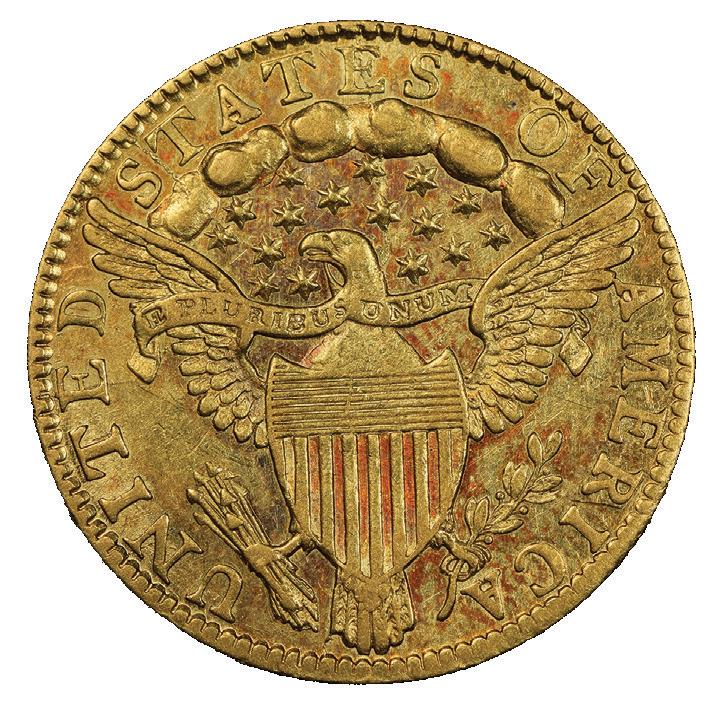
While major varieties like the 1942/1 Mercury Dime, 2004-D Wisconsin Quarter with High Leaf or Low Leaf, or the 1795 $10 Eagle with 9 or 13 Leaves have long been recognized by collectors, dealers, and price guides, many other die varieties have not. However, recognition of die varieties has steadily been expanding across the series as researchers develop new die variety classification systems and publish books about them.
But one big reason why important varieties haven’t been recognized, here-to-fore, is that owners of these coins don’t bother to look up variety diagnostics and attribute them. What’s more, many submitters of coins to PCGS do not
request the variety attribution service. Doing so will result in the variety classification printed on the holder’s label. My purpose in writing this is to help you discover rare and valuable varieties which you can enjoy and hopefully sell for higher prices when the time comes.
Using Die Variety Listings in the PCGS Population Report and Price Guide
I encourage you to explore the PCGS Population Report and PCGS Price Guide (on PCGS.com) relative to die varieties. Using the previously mentioned BD-1 1796 No Stars Quarter Eagle as an example, I suggest you look this coin issue up in the PCGS Population Report – it is PCGS coin number 7645. Once there, click on the plus (+) sign that appears immediately to the left of the coin’s 7645 PCGS number. You’ll then see a drop-down listing of the two die variety listings: BD-1 and BD-2, with their PCGS coin numbers as varieties: 45500 for BD-1 and 45501 for BD-2.
The total population of coins graded by PCGS for the 1796 No Stars Quarter Eagle “design type” is 78. The PCGS number for the type is the 7645 base number. For the graded population of the varieties, there is one coin listed for the rare BD-1. That would be the Bass coin that was sold last September. For the much more common BD-2 variety, there have been just two graded by PCGS. But, please don’t use that population total as an indication of rarity! It’s merely the total number of coins for a variety that have been submitted for variety attribution.
Most importantly, until more varieties are attributed, populations for many varieties should not be used as an indication of rarity.
So, this brings me to the main point of this article. Using the same 1796 No Stars Quarter Eagle example, of the 78 total coins listed in the PCGS Population Report for this type, just three of them have been attributed as to variety, leaving 75 that have not been attributed. It’s possible that among those 75 coins are one or more of the rare, four to six known, BD-1 1796 No Stars Quarter Eagles! If you want to go on a treasure hunt for rare, valuable varieties, I encourage you to follow this same line of thinking for whatever coin varieties you want to check for in a particular series.
Die varieties for some series, such as early copper coins, minted from 1793 to 1857, have been the center of attention in that collecting specialty for well over a century. The Capped Bust Half Dollar series is another one in which collectors have long sought out die varieties.
Research on die varieties is ongoing, resulting in recently published reference books like A Register of Liberty Seated Half
Dollar Varieties, Volume VI, Philadelphia Mint 1856 to 1873 No Arrows by Bill Bugert, published in 2022. Expanding on the existing research began by John W. McCloskey, who wrote a paper published in 1989 entitled A Study of Classic Half Eagles 1834-1838 , Daryl Haynor wrote a 368-page reference book, United States Classic Gold Coins of 1834-1839, which was published in 2020. And while the series of auction sales of the Harry W. Bass, Jr. Core Collection is taking place through Heritage Auctions, PCGS founder John Dannreuther’s book comes to mind, Early U.S. Gold Coin Varieties: A Study of Die States, 1795-1834, which was published in 2006 and is based on the personal research notes of Harry W. Bass, Jr.
I encourage you to go online and explore the reference books and other resources that are available in your numismatic specialty. There are also clubs, such as the Colonial Coin Collectors Club, known in the hobby as “C4,” the Bust Half Nut Club, or the Liberty Seated Collectors Club. Additionally, the PCGS Price Guide, PCGS Population Report, PCGS CoinFacts, and PCGS Auction Prices Realized provide information and data on die varieties.
Here’s an example of two comparable sales in which all things are equal, except that the two coins are of two different die varieties. Both are 1795 Small Eagle Half Eagles, graded MS61 by PCGS. Both coins were auctioned on the same day, September 29, 2022, from the Harry W. Bass, Jr. Core Collection.
The first PCGS MS61 1795 Small Eagle Half Eagle is a BD-1, which is a Rarity-5 with 40 to 50 examples known. The coin brought $198,000. The second MS61 1795 Small Eagle Half Eagle is a BD-3, which is a Rarity-3+ with 175 to 225 pieces known. It sold for $114,000. That’s about a 75 percent premium for the rarer variety, and it was definitely worth obtaining the attribution for this variety! Some of the key identifiers for these two varieties are the obverse stars. The 11th star is separated from the “Y” in LIBERTY on BD-1, while the 11th star touches the “Y” on BD-3. Even though the largest auction companies note these varieties in their catalog descriptions, it makes sense to have the variety attribution noted on the PCGS grading label as reassurance to potential buyers.
Mark Ferguson began buying and selling coins in 1969. He graded coins for PCGS between 1986 and 1990 and currently serves as the company's senior price guide consultant. He’s a numismatic researcher, writer, appraiser, and advisor, and he authored The Dollar of 1804: The U.S. Mint’s Hidden Secret.


 By Jaime Hernandez
By Jaime Hernandez
Much excitement took place in the modern coin market in 2022. One of the highlights of the year was a major auction of the 2021 American Eagle At Dusk and At Dawn 35th Anniversary Silver and Gold One-Ounce Coins. The U.S. Mint celebrated a major anniversary of the silver and gold eagles and the introduction of new designs for the coins by striking a total of 2,000 ceremonial silver and gold eagles; 500 each of the silver and gold coins were struck with the old 1986 design and another 500 each of the silver and gold were produced with the new 2021 designs.
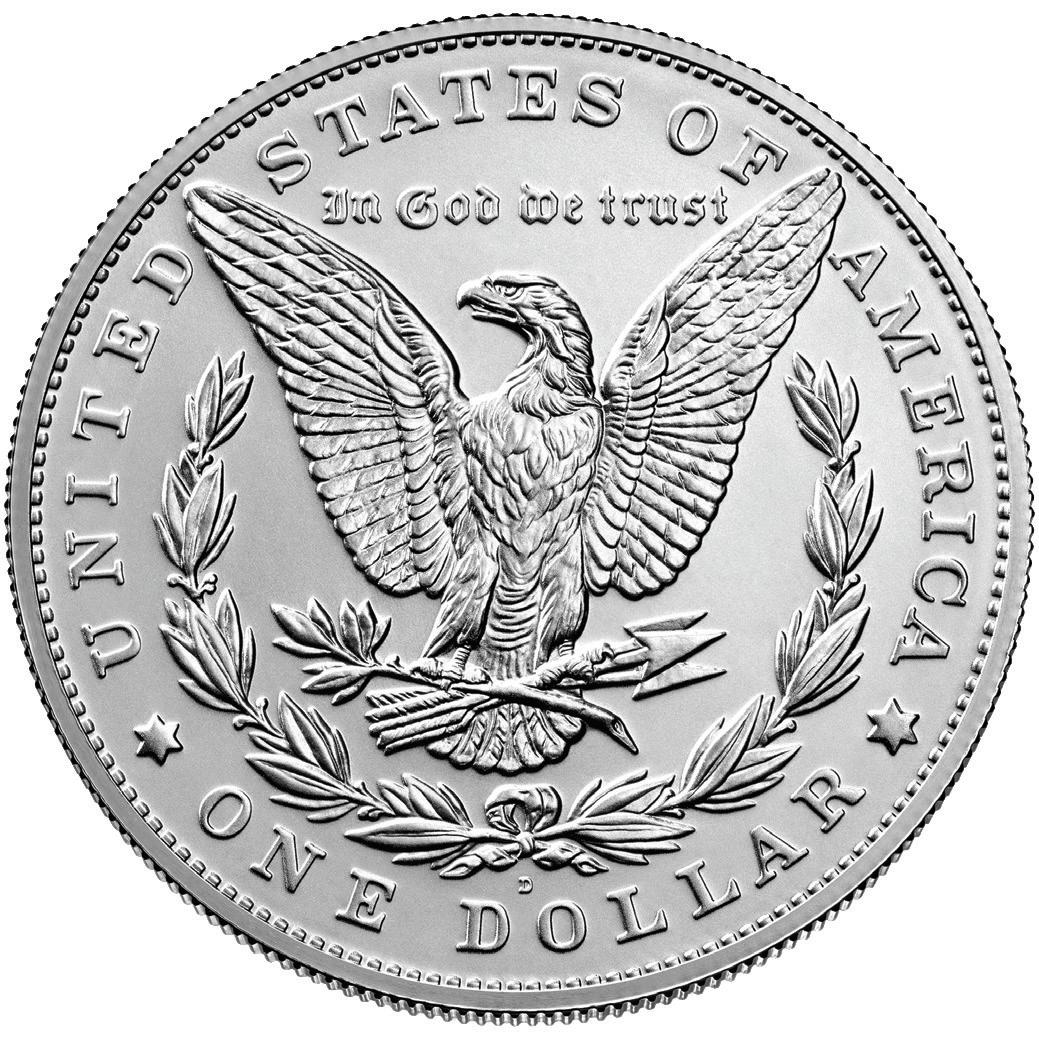
Another highlight in the modern coin market is a $100 2017-W Proof Platinum Eagle, with the Frosted Freedom variety that was recently discovered and then auctioned by GreatCollections. The Frosted Freedom Eagles were not intended to be sold to collectors, as they were only produced as trial pieces. However, they were later inadvertently sold by the United States Mint. The U.S. Mint has confirmed that about 12 examples of the $100 2007-W Platinum Eagle with the Frosted Freedom finish were produced, making these modern coins truly rare.
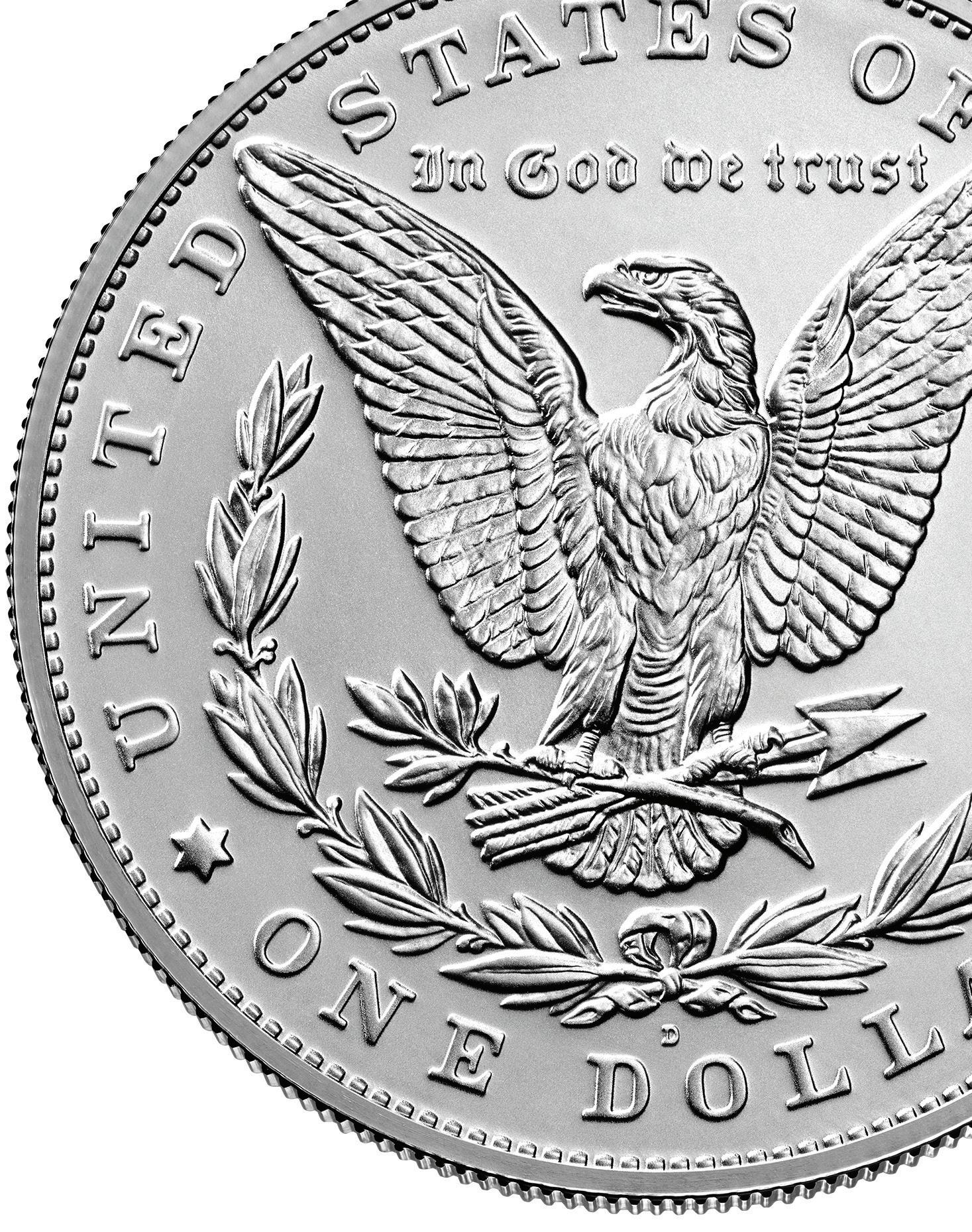
Let’s now highlight some of the best modern coin performers from the past three months. The top performer on the list is the 2010-P Grand Canyon Quarter in PCGS MS68. The coin went from $575 to $2,500 – a 375% increase in the last three months. The coin happens to have a population of just one, with none being graded higher. So, the price increase seems more than warranted, as it’s a tough coin to find in this condition and belongs to a very popular series.
The next coin on the list is a 2021-D Morgan Dollar graded PCGS MS70, with the First Strike designation. The 2021 Morgan and Peace Dollars also created lots of excitement across the market when the coins were originally issued over a year ago. Now that some of the dust has settled, all 2021 Morgan and Peace Dollars have performed really well in the market, but the 2021-D Morgan Dollar appears to be the best performer from the group. The coin in MS70 First Strike has gone from $475 to $1,100 in the past several months, representing a 132% increase.
The next coin is a 1982-P Jefferson Nickel in PCGS MS66+ Full Steps. Jefferson Nickels struck at the Philadelphia Mint in

1982 are scarce in any grade with the Full Steps designation. This is mainly because the reverse of the coins was produced from weakly and poorly made dies. So, finding an example in higher grades can be extremely challenging, especially with the Full Steps designation. Currently, this coin has a population of 5 in MS66+FS, with only two examples grading higher. This coin recently increased in price from $1,200 to $2,750, coming in with a 129% increase.
These are just a few examples of the coins that performed remarkably well in the last three months. As we can see, the modern coin market continues to be strong while infusing much energy with new coins being issued and even some rare coins still being discovered. We can’t wait to see what exciting




coins and discoveries occur across the market throughout the rest of 2023!


Jaime Hernandez is an editor for the PCGS Price Guide and has been a proud member of the PCGS team since 2005. By the time he reached his early 20s, Jaime was successfully buying and selling coins with some of the most prominent dealers and collectors in the country. Email: jhernandez@collectors.com








This 1821 Capped Bust Half Eagle graded PCGS PR65CAM hailed from the Harry W. Bass, Jr. Collection and realized $4,620,000 in a September 2022 Heritage Auctions sale. The rarity was one of many high-end coins that rode the momentum of a robust coin market in 2022. Courtesy of PCGS TrueView.

A year ago, the 2022 coin market started off with tremendous momentum. Demand for coins appeared to be strong in virtually all areas of the market. Coin prices were appreciating and gold hit a near-record-high price in early March, exceeding $2,000 per ounce. But soon afterward, the gold price began pulling back, retreating to the mid$1,600s by autumn. Price inflation accelerated, hitting people in their pocketbooks at the grocery store and the gas pump. The Federal Reserve raised interest rates to combat inflation and then the news pundits began talking about an impending recession.
Still, the coin market remains active with strong demand. Investors continue to buy bullion and bullion-related coins. Collector coins are actively trading, but there’s been a slight pull-back in market prices for some lower to middle Mint State coins, which began during late spring. For people building collections and buying coins, this should be looked at as an opportunity and relief from the continually rising prices that the market has been experiencing since 2020.


Conversely, high-grade top rarities that sell for six-, seven-, and (recently) eight-figure sums continue to set price records at
auction and in private transactions. This is true, also, for “toppop” coins that are sought by PCGS Set Registry collectors. In some cases, collector-investors are offering higher than market prices to pry high-end trophies from their owners, if they can track down the coins and those owners. Dealers and agents have been invaluable resources for this kind of help.
Higher prices have also attracted important collections into the market, in addition to personal circumstances that result in collections being sold. The Harry W. Bass, Jr. Core Collection is an example of a very important collection that hit the market during 2022. Heritage Auctions offered Part I of this collection at the end of September. Harry Bass was famously known for collecting early U.S. gold coins by die variety. The collection had been on exhibit at the American Numismatic Association’s Edward C. Rochette Money Museum in Colorado Springs, Colorado, for more than 20 years. The board of directors of the Harry W. Bass, Jr. Foundation decided to deaccession the collection to be able to use the proceeds to increase the foundation’s philanthropic endeavors in the Dallas, Texas, area.
Another landmark collection that began hitting the market
in 2022 through Stack’s Bowers Galleries is the Sydney F. Martin Collection of American colonial-era coinage. The collection comprises more than 15,000 coins. The first auction featured New Jersey and Massachusetts coppers, Higley coppers, Saint Patrick coinage, and more. This collection is expected to take several years to sell with presale estimates ranging from $25 to more than $200,000, allowing collectors with varying budgets to participate. Martin was a true student of numismatics in this specialized area, authoring five specialty books on these subjects.


There are no signs in the coin market that point to fundamental changes coming. Overall, coin prices are stable. Absent a financial crisis, the market appears to be headed into 2023 in a healthy, stable state, much the same as was experienced during late 2022.
Vic Bozarth is a familiar face on the bourse floor to many who have attended coin shows over the last five decades. He’s a self-described “coin weenie” who has attended more than 1,000 shows and vast experience both buying and selling many of the finest PCGS coins. His numismatic knowledge as a dealer and collector provides a unique perspective on our industry.

Mark Ferguson began buying and selling coins in 1969. He graded coins for PCGS between 1986 and 1990 and currently serves as the company's senior price guide consultant. He’s a numismatic researcher, writer, appraiser, and advisor, and he authored The Dollar of 1804: The U.S. Mint’s Hidden Secret.












